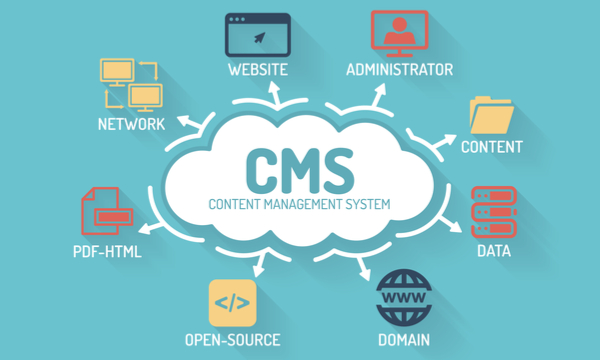
In the ever-evolving world of web development, choosing the right Content Management System (CMS) can feel like navigating a labyrinth. Enter the two main contenders: Headless CMS and Traditional CMS. But which one is the perfect match for your project? Fear not, web warriors! This guide will shed light on the key differences between headless and traditional CMS, empowering you to make an informed decision.
Traditional CMS: The All-in-One Workhorse
Imagine a traditional CMS as a Swiss Army Knife of web development. It combines content management functionalities (think creating, editing, and publishing content) with built-in features for website design and presentation. This makes it a user-friendly option for simple websites or those who value a one-stop-shop approach.
Benefits:
- Easy to Use: Traditional CMS systems are often user-friendly, with intuitive interfaces for managing content, even for those without technical expertise.
- All-Inclusive Package: No need to integrate separate tools – a traditional CMS typically offers everything you need to get your website up and running.
- Cost-Effective: For smaller projects with basic needs, traditional CMS can be a cost-effective solution.
Drawbacks:
- Limited Flexibility: Design and content are tightly coupled, making it difficult to adapt the website’s look and feel independently.
- Scalability Challenges: Traditional CMS can struggle to handle large amounts of content or complex website functionalities.
- Vendor Lock-In: You might be limited by the features and functionalities offered by the specific traditional CMS platform.
Headless CMS: The Decoupled Dynamo
Think of a headless CMS as a content powerhouse, separate from the front-end presentation layer of your website. It focuses solely on content creation, editing, and management, offering a robust API (Application Programming Interface) for seamless integration with any front-end technology.
Benefits:
- Ultimate Flexibility: Headless CMS allows you to build your website’s front-end with any framework or technology, providing unparalleled design freedom.
- Scalability Champion: Headless architecture scales effortlessly, making it ideal for complex projects with ever-growing content needs.
- Omnichannel Power: Deliver content seamlessly across multiple platforms (websites, mobile apps, smart displays) with a headless CMS.
Drawbacks:
- Technical Expertise Needed: Implementing a headless CMS requires more development expertise compared to a traditional CMS.
- Higher Initial Investment: Setting up and integrating a headless CMS can involve a steeper initial learning curve and potentially higher costs.
- DIY Approach: You’ll need to build or integrate separate tools for front-end development and website management.
One major advantage of a CMS is its collaborative nature. Multiple editors can contribute, schedule or manage content to be published. Because the user interface is usually browser-based, a CMS can be accessed from anywhere by any number of users.
The second major advantage of a CMS is that it allows non-technical people who don’t know programming languages to easily create and manage their own content. The drag-and-drop editors of a typical content management platform allows users to enter text and upload images without needing to know any HTML or CSS (programming languages).
When a company uses a CMS to publish its web pages, it reduces its reliance on front-end developers to make changes to the website, making it quicker and easier to publish new web pages improving the digital experience for users and visitors.
When a company uses a CMS to publish content to other channels – like social, mobile apps and e-commerce, it can drastically reduce the amount of development a company needs to do and make it easier to distribute content to different channels simultaneously.
Headless vs. Traditional CMS: Picking Your Champion
So, which CMS reigns supreme? It depends on your project’s specific needs! Here’s a quick cheat sheet:
Choose a Traditional CMS if:
- You have a simple website with basic content management needs.
- You prioritize ease of use and a user-friendly interface.
- You have limited development resources or budget constraints.
Embrace a Headless CMS if:
- You crave ultimate flexibility and design freedom for your website.
- You anticipate significant growth and require a scalable solution.
- You plan to deliver content across multiple platforms seamlessly.
VEcloud.io: Your Trusted CMS Navigators
At VEcloud.io, we’re a team of web development experts well-versed in both traditional and headless CMS solutions. We’ll help you analyze your project requirements and recommend the best-fit CMS to empower your online presence.
Contact VEcloud.io today for a free consultation and let’s navigate the CMS landscape together!